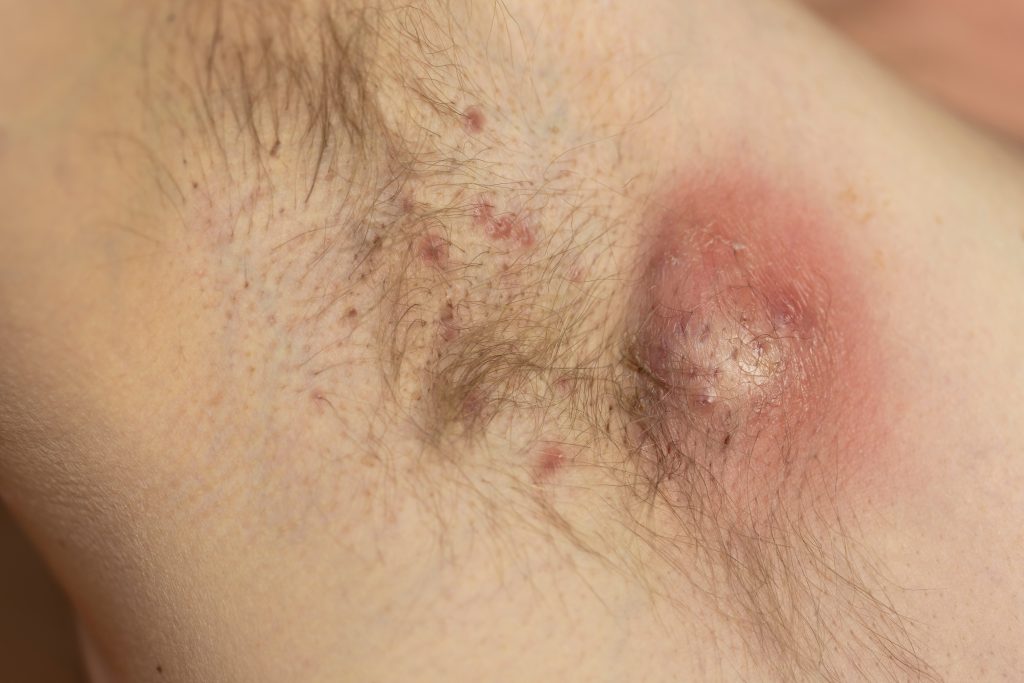Patients with hidradenitis suppurativa (HS) who were treated with biologics were significantly less likely to be uninsured, covered by Medicaid, or covered by other government programs, compared with those who did not receive biologics, according to new research presented at the 2025 annual meeting of the Society for Investigative Dermatology in San Diego, CA.
They also experienced a significant reduction on mortality at 60 months, though there were no statistical differences between the two groups in hospitalizations, critical care unit (CCU) admissions, or 60-month survival.
Key Findings from Mayo Clinic Analysis
Those are key findings from a retrospective analysis of the Mayo Clinic Platform Discover database, which includes more than 7.3 patient records in Minnesota, Arizona, and Florida.
“While biologics have really expanded treatment options for HS, most existing studies focus on short-term efficacy and do not adjust for socioeconomic variables,” says first author Samantha Shao, a third-year student in the combined MD/PhD program at Mayo Clinic School of Medicine in Scottsdale, AZ.
To identify whether treatment with biologics was associated with differences in healthcare outcomes, patient demographics, and insurance status, Shao, fellow medical school classmate Sarah Amjad, and senior author Stella Chen, MD, of the department of dermatology at Mayo Clinic in Arizona, conducted propensity score matching to compare 871 HS patients in the Mayo Clinic Platform Discover database who were treated with biologics including adalimumab, infliximab, or secukinumab (Cosentyx, Novartis) to 871 who were not treated with biologics, controlling for age, sex, race, and ethnicity.
The mean ages of patients in the biologics group and non-biologics group were similar at 37 years, as was the prevalence of obesity (39% vs. 43%, P=0.087). However, in terms of clinical outcomes, the biologics group had an improved 60-month survival (98.5% vs. 97%; P=0.034) and a decreased mortality (1.5% vs. 6.5%, P<0.0001), though there were no significant differences between the two groups in hospitalization rates (41.9% vs. 42.0%, P=0.96) or in CCU admissions (8.8% vs. 9.1%; P=0.86).
Lower Rates of Non-Insurance
The researchers also observed that the biologics group had significantly lower rates of non-insurance (14.8% vs. 27.2%, P<0.0001), Medicaid coverage (21.9% vs. 32.1%, P<0.0001), and government insurance excluding Medicaid and Medicare (15.3% vs. 24.1%, P<0.0001). “This highlights the clear disparities in access to biologic therapies based on insurance type,” Shao says.
When she and her colleagues added insurance status as a variable to propensity score matching, they found that the biologics cohort had a significantly lower overall mortality (1.6% vs. 4.4%, P<0.001), but there were no significant differences in 60-month survival (97% vs. 96.9%, P=0.31), hospitalizations (40.6% vs. 36.5%, P=0.076), and CCU admissions (8% vs. 7.6%, P=0.72).
“In terms of implications, our results suggest that insurance status may confound the perceived benefits of biologic therapy, making it difficult to separate the effects of biologics from access to care,” Shao concludes. “Larger studies with multivariable analysis and multivariable adjustments are really needed to validate these findings, and to account for the complexities of socioeconomic factors that play a role in the outcomes that we see with biologic therapy.”
Jennifer L. Hsiao, MD, Director of the HS clinic at the University of Southern California in Los Angeles, CA, who was not involved with the analysis, says that strengths of the study include the large number of patients in the Mayo Clinic Platform Discover database and the ability to propensity match for important demographic variables such as age, gender, and race. “Potential limitations of this study include the lack of matching for disease severity between patient cohorts,” she says. “In addition, patients in the biologics cohort were significantly more likely to have inflammatory bowel disease, and this may have also influenced decisions regarding biologic start.”
Addressing Disparities is Critical
The use of adalimumab, secukinumab, and bimekizumab (Bimzelx, UCB) for HS in the last decade “represents a tremendous leap forward for both patients with HS and the clinicians who treat them,” Dr. Hsiao adds. “However, if these medications are not accessible by patients who need them, the potential positive impact of these approved treatments is severely blunted. The authors’ study highlights that addressing disparities in access to care is a critical component of optimizing HS management for all patients.”
Shao reported having no disclosures. Dr. Hsiao disclosed that she is a member of the board of directors for the HS Foundation and has served as an advisor, investigator, and/or speaker for AbbVie, Amgen, Aclaris, AstraZeneca, Boehringer Ingelheim, Galderma, Incyte, Novartis, Pfizer, Sanofi, Regeneron, and UCB.
–Doug Brunk


